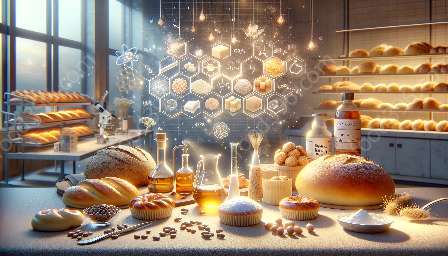When it comes to creating light and airy baked goods, the role of leavening agents is crucial. These agents, such as yeast, baking powder, and baking soda, play a key role in the chemical reactions that result in the rise and texture of various baked items. Understanding the impact of leavening agents on different types of baked goods requires an exploration of baking science and technology.
The Chemistry Behind Leavening Agents
Leavening agents are substances that cause expansion, giving baked goods a porous structure and texture. The chemical reactions involved in leavening fall into two main categories: biological and chemical leavening.
Biological Leavening
Yeast is a common biological leavening agent used in bread making. When yeast is combined with water and sugar, it undergoes a fermentation process, producing carbon dioxide and alcohol. The carbon dioxide gas is responsible for creating air pockets in the dough, causing it to rise. This process gives bread its characteristic texture and flavor.
Chemical Leavening
Baking powder and baking soda are popular chemical leavening agents used in various recipes. Baking soda, or sodium bicarbonate, requires an acidic ingredient, such as buttermilk or yogurt, to activate its leavening properties. When combined with an acid, baking soda produces carbon dioxide, causing the batter or dough to rise. Baking powder, on the other hand, contains both an acid and a base. When mixed with liquids and heated, it undergoes a two-step reaction, producing carbon dioxide and resulting in the expansion of the batter or dough.
Leavening Agents in Different Baked Goods
The selection of leavening agents greatly influences the texture and structure of baked goods. Different types of baked items require specific leavening agents to achieve the desired results. Below are examples of how leavening agents are used in various baked goods:
Breads and Rolls
- Yeast is the primary leavening agent in traditional bread making. It provides the characteristic rise and texture of bread, creating a soft and airy crumb.
- Breads and rolls can also be leavened with chemical leavening agents, such as baking powder or baking soda, particularly in quick bread recipes that do not require the time-consuming process of yeast fermentation.
Cakes
- Most cake recipes rely on chemical leavening agents, such as baking powder or baking soda, to achieve a light and fluffy texture. The specific type and amount of leavening agent used can impact the final structure and density of the cake.
Pastries
- Pastries, such as puff pastry and croissants, rely on layers of thin dough and butter for rising, creating a flaky and delicate texture. While these pastries do not typically use traditional leavening agents, the unique layering process results in the desired rise and airy structure.
Baking Science and Technology
The understanding of leavening agents and their chemical reactions is at the core of baking science and technology. Bakers and pastry chefs need to comprehend the impact of different leavening agents on the physical and sensory properties of baked goods. Additionally, advancements in baking technology have led to the development of specialized leavening agents and techniques that cater to various dietary requirements and consumer preferences.
Gluten-Free and Vegan Baking
With the growing demand for gluten-free and vegan baked goods, the baking industry has formulated leavening agents that are suitable for these dietary preferences. Alternative leavening agents, such as xanthan gum and baking powder with added acids, have been developed to mimic the properties of traditional leavening agents while meeting specific dietary needs.
Quality Control and Innovation
Modern baking operations rely on precise control of leavening agents, ensuring consistency and quality in the final products. Innovative techniques, such as encapsulation of leavening agents, enhance their stability and effectiveness, resulting in improved shelf life and performance. Understanding the science behind leavening agents enables bakers to create innovative and high-quality baked goods that meet consumer expectations.
Conclusion
Leavening agents, whether biological or chemical, are fundamental in the creation of a wide array of baked goods. Their interactions with other ingredients and the application of baking science and technology play a central role in achieving the desired textures, flavors, and structures of breads, cakes, pastries, and more. It is crucial for professionals and enthusiasts in the baking industry to delve into the science of leavening agents to drive innovation and meet the evolving needs of consumers.


